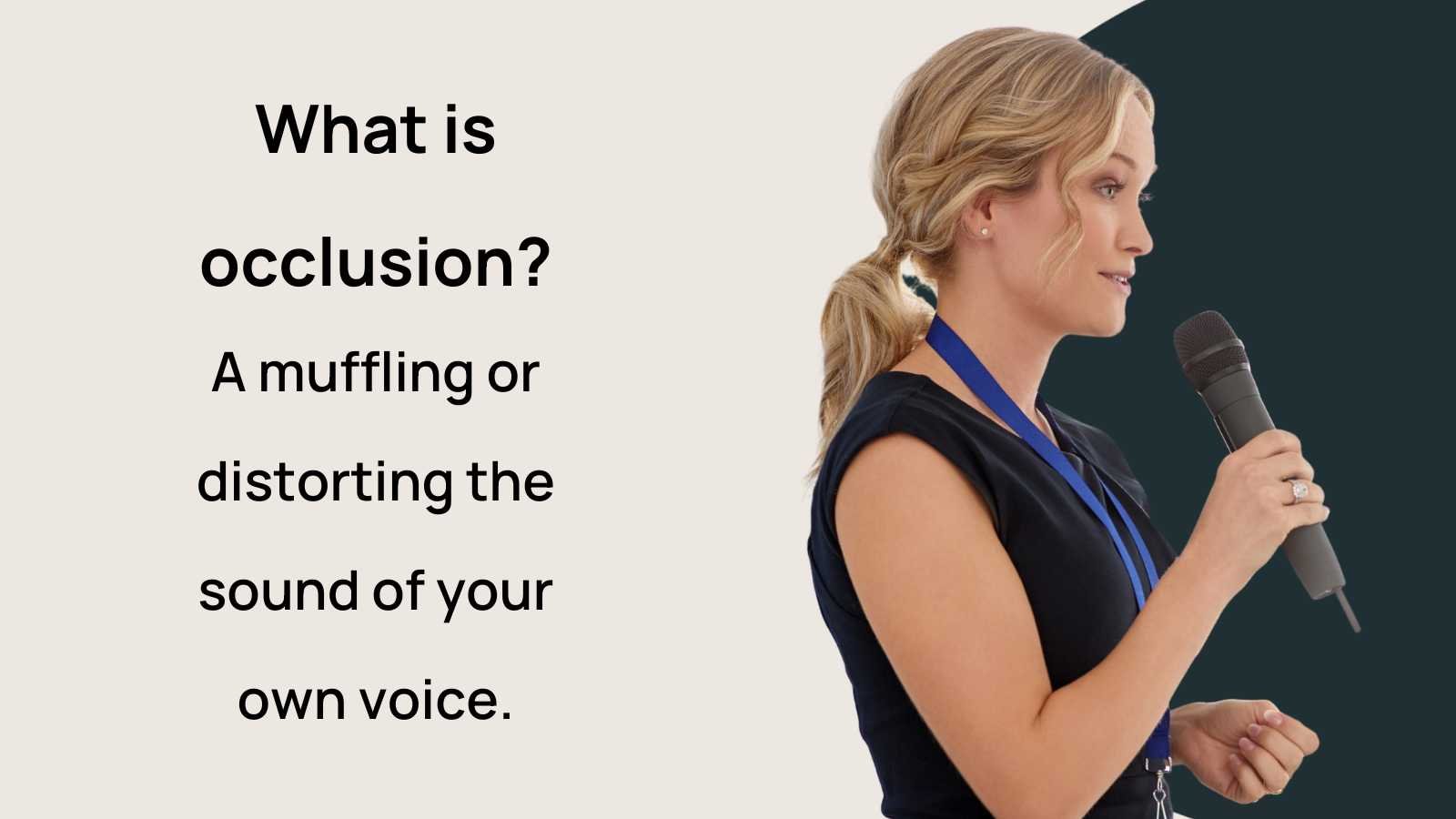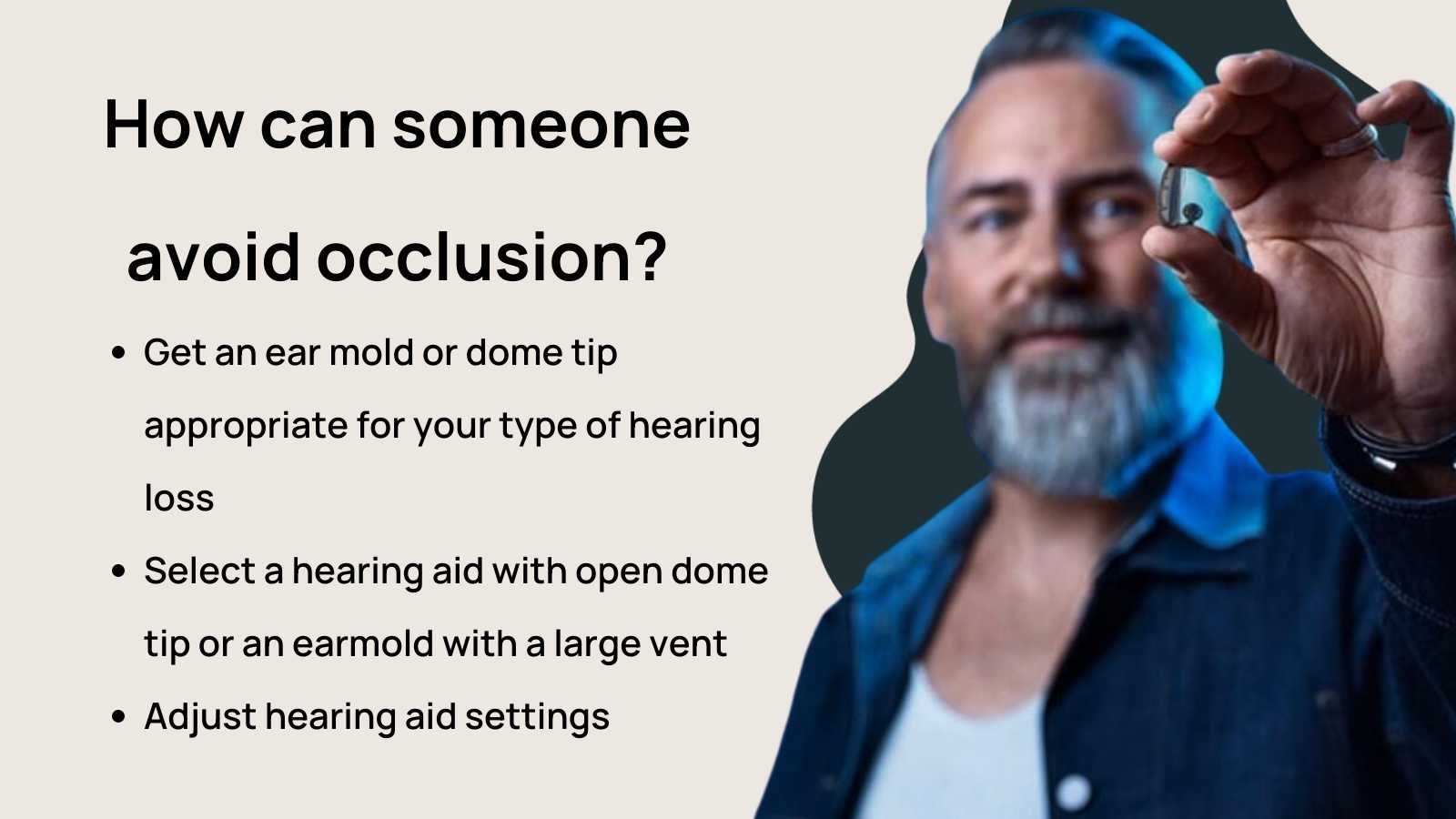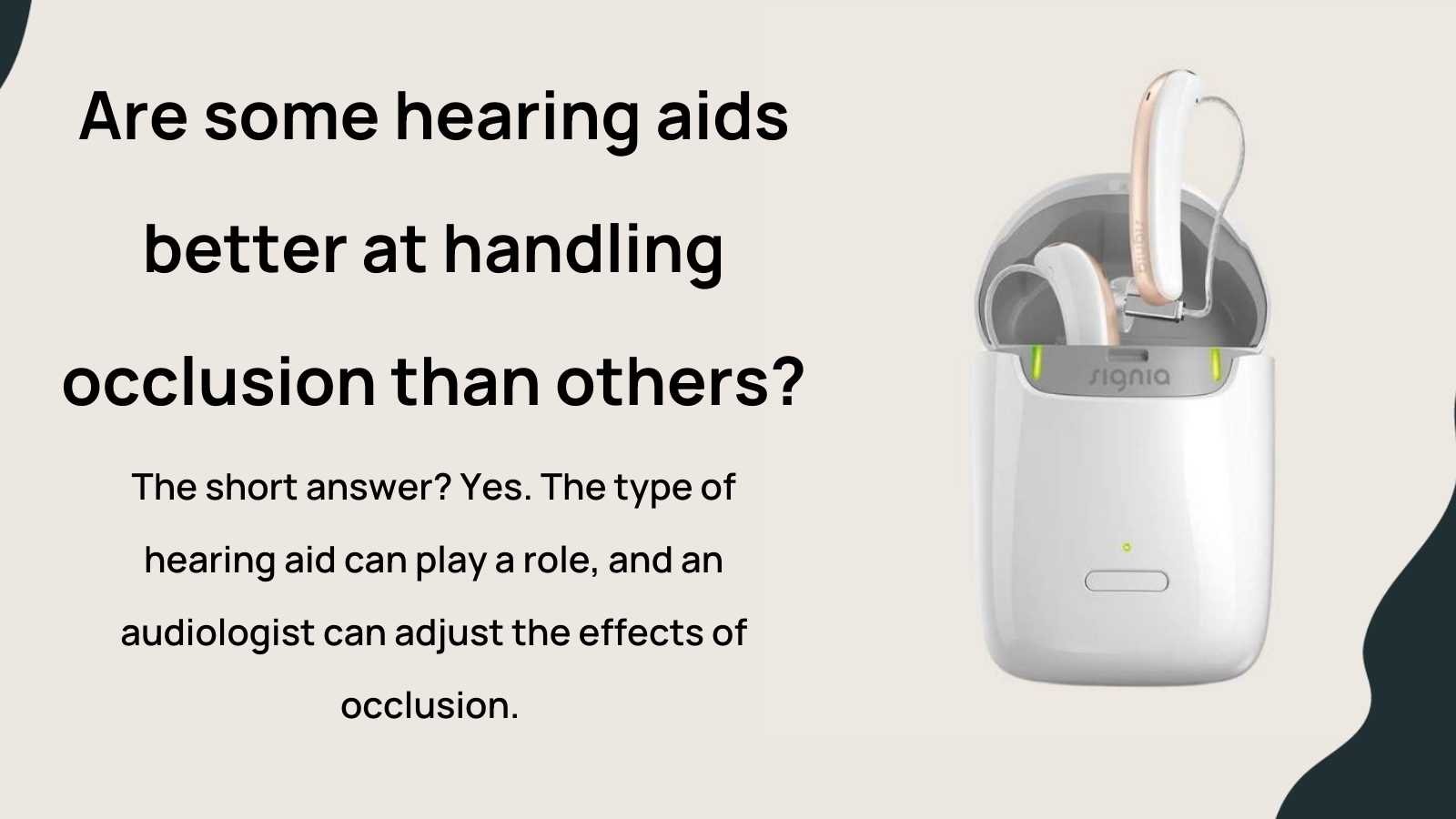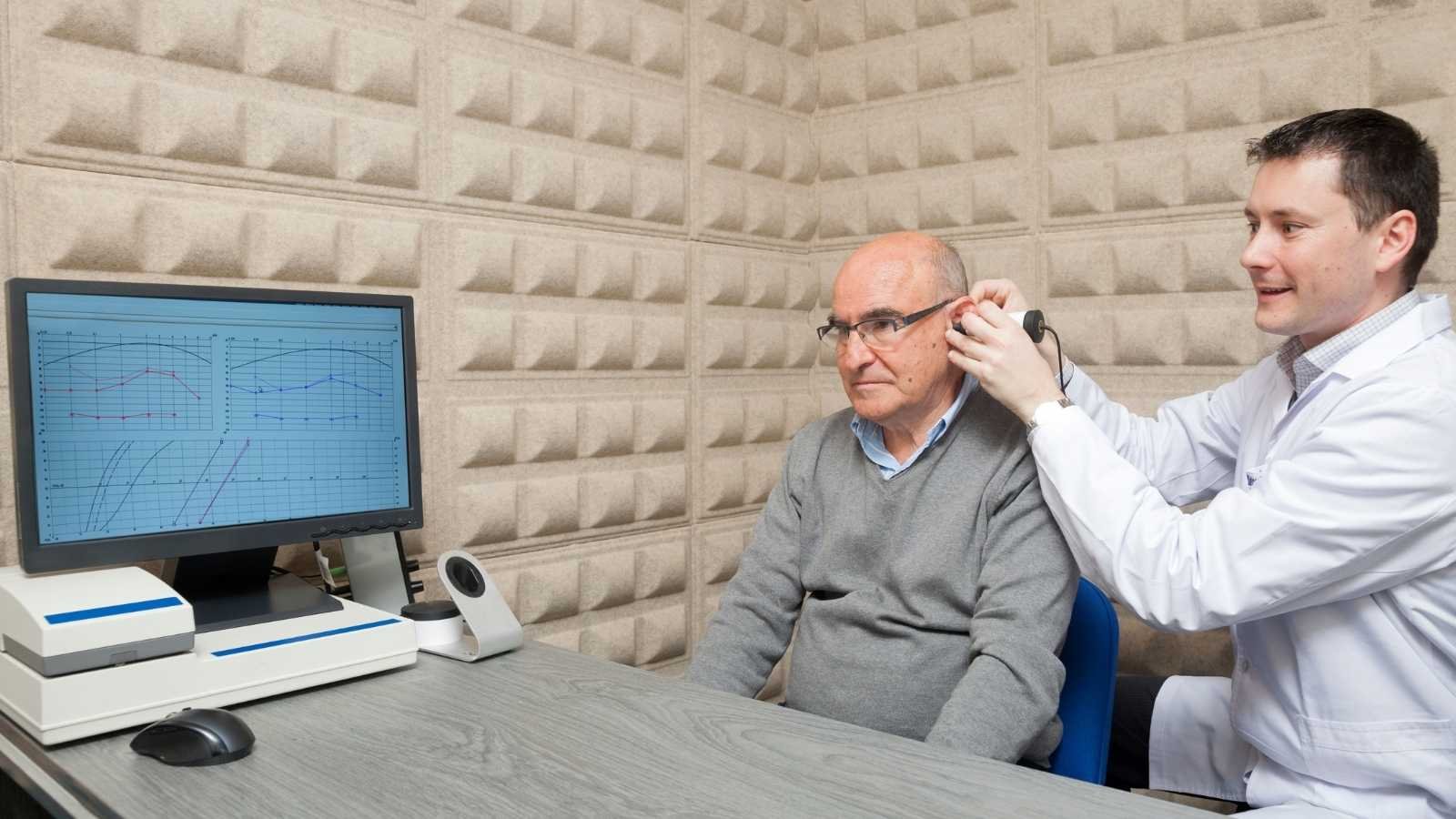Have you ever felt like your hearing aid was muffling or distorting the sound of your own voice? If so, you may be experiencing an effect known as occlusion. As an audiologist, I've worked with many patients who experience this, particularly as they adjust to wearing hearing aids. Occlusion is common with hearing aid wearers and can significantly impact the quality of sound they receive. Let's explore what causes this effect, how to avoid it, and what to know about it.
What is occlusion?

Here's a quick trick to explain what occlusion sounds like. Plug your ears and make an eee sound. That "boomy" sound of your own voice is what occlusion sounds like. When we hear our own voice, we hear it in several ways: Through the bones of the skull (bone conduction) and our ears (air conduction). Placing a hearing aid in the ear alters this natural phenomenon and changes the way our voice sounds, leading to the occlusion effect.
Furthermore, when you wear a hearing aid, your voice is amplified by the hearing aid due to proximity, reflection, refraction, and head shadow effects. This can result in an echoing effect that can distort the sound of your voice, chewing sounds, swallowing, humming, or other internal sounds. I'm reminded of a patient who asked, "Do I really talk this loud?" as their voice seemed unusually loud. Fortunately with some adjustments, things got better.
How can someone avoid occlusion?

Fortunately, there are several ways to reduce or eliminate the occlusion effect. The occlusion effect is especially common for hearing aid wearers with normal low-frequency hearing. Your audiologist will select an earmold or dome tip appropriate for your hearing loss and allows using your natural hearing in the low frequencies. For example, the audiologist may recommend an open dome tip or an earmold with a large vent to let some of that low-frequency sound escape and create a more natural sound.
An audiologist can adjust the hearing aid settings and tweak the sound to make it more comfortable. Plus, some newer hearing aids allow adjustments in their settings to reduce or eliminate occlusion effects. For example, Signia has its Own Voice Processing (OVP) system to adjust the sound of the hearing aid wearer's voice and make it more comfortable. One study showed that OVP significantly impacted users' perception of their voice, even with a more occluded ear canal. It's great that this new technology can make such a difference in the user's own voice, as this can be an obstacle for some hearing aid users in hearing aid adoption.
Are some hearing aids better at handling occlusion than others?

Yes, certain types of hearing aids are better suited for handling occlusion than others. While an audiologist can help to reduce this effect with earpiece selection or programming adjustments, the type of hearing aid can also play a role. Let's discuss what types of hearing aids work well to reduce the occlusion effect and which work less favorably.
RIC Hearing Aids
RIC hearing aids have a lot of flexibility regarding earpiece selection, which allows for a more open fit and can help reduce the occlusion effect. For example, open dome tips or large earmold vents can help provide more high-frequency amplification while reducing your voice's closed-off, boomy sound. RIC hearing aids are popular for several reasons, and sound quality is a big reason why people choose them.
Custom Hearing Aids
For those who prioritize cosmetics, custom hearing aids seem like a favorable—and stylish—option. However, one downside is that they can create the occlusion effect because they block off the ear canal. For this reason, I wouldn't recommend this type of hearing aid for patients with normal low-frequency hearing due to this unpleasant sound quality and own voice perception.
Does it get better with time?

It takes time to get used to wearing hearing aids. After several weeks of wearing them consistently, most people get used to how it feels to have something physically in the ear and also adjust to the sound quality of the hearing aids. With occlusion, most people find it less noticeable as they become accustomed to wearing their hearing aids. However, it's essential to communicate with your hearing healthcare provider about any questions or concerns you have. No one benefits from a hearing aid in a drawer because the sound is so uncomfortable that you can't wear them.
It can also depend on your hearing loss. Normal low-frequency hearing makes occlusion more likely. But if you have significant hearing loss, it can take time to adjust to hearing your voice again as you've probably not heard it at that volume in some time. I remember one patient recently who asked, "Does my voice really sound like that?" It's very normal for your voice to sound different to you. Part of it is hearing your voice through a speaker (i.e., the hearing aid), and part is that you haven't heard it in some time.
What should I do if it's bothering me?

Talk with your audiologist about what is bothering you. There are several ways they can adjust things to make it more comfortable. It may involve changing the fit in the ear, adjusting your hearing aid settings, or reducing the volume. In any case, contacting your hearing healthcare provider and attending your follow-up visits is essential. Compared to several decades ago, there are so many options with hearing aid technology to make it comfortable and give you the benefit you need.
Conclusion
While hearing aids significantly benefit communication, it's not unusual to experience some occlusion initially, especially while adjusting to wearing them. Fortunately, there are hearing aids and even specific brands that can help reduce the occlusion effect and other tips on what to do if it's still bothering you. If you have any concerns about your hearing aid experience, please don't hesitate to contact your audiologist for more advice. With the right fit and settings, you can enjoy better, more comfortable sound quality.






